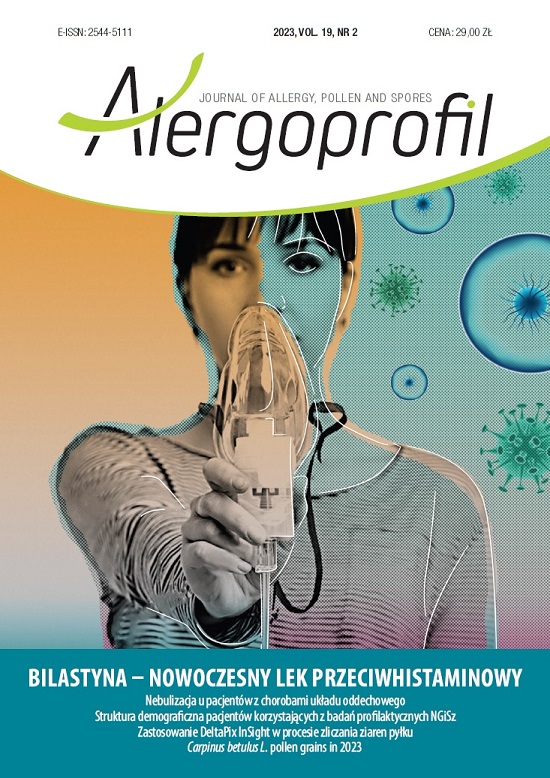Applicability of DeltaPix InSight software for hazel, alder and birch pollen grains counting Original article
Main Article Content
Abstract
This study aims to evaluate the applicability of the DeltaPix InSight software for the automatic recognition of pollen grains of three allergenic taxa, i.e. hazel (Corylus sp.), alder (Alnus sp.) and birch (Betula sp.). The analysis was conducted for daily data from Wroclaw monitoring station for 2 weeks during the 2023 season.
The software worked on the basis of five criteria to recognize the pollen grains, i.e.: the colour determined by three RGB ranks, the morphology of the objects searched for as a preprocessing step, and thresholds regarding the area, shape and Feret diameter for the areas designated by the software that correspond to the first two criteria.
The results of the automatic counting were compared with the results of the manual observation and summarized using the forecast accuracy measure statistics. The results showed that using the first 4 criteria provides the best results in pollen quantification. When a threshold related to Feret diameter was included, the software performed significantly worse in counting pollen grains. The results that were the closest to those of manual observation were mainly obtained during the week, when alder and hazel pollen predominated. Much poorer results were obtained in the recognition of birch due to the large number of pollen grains, including those similar to birch pollen (e.g. oak), as well as contamination on the preparation (plant fragments), resulting in numerous false signals. The verification allowed to identify the main advantages and disadvantages of the software and to determine when the software could be helpful in counting airborne pollen grains.
Downloads
Article Details

This work is licensed under a Creative Commons Attribution-NonCommercial 4.0 International License.
Copyright: © Medical Education sp. z o.o. This is an Open Access article distributed under the terms of the Attribution-NonCommercial 4.0 International (CC BY-NC 4.0). License (https://creativecommons.org/licenses/by-nc/4.0/), allowing third parties to copy and redistribute the material in any medium or format and to remix, transform, and build upon the material, provided the original work is properly cited and states its license.
Address reprint requests to: Medical Education, Marcin Kuźma (marcin.kuzma@mededu.pl)
References
2. Pawankar R, Canonica GW, Holgate ST et al. White Book on Allergy. World Allergy Organization 2013: 242.
3. Kurganskiy A, Creer S, de Vere N et al. Predicting the severity of the grass pollen season and the effect of climate change in Northwest Europe. Sci Adv. 2021; 7(13): 11.
4. Baldacci S, Maio S, Cerrai S et al. Allergy and asthma: Effects of the exposure to particulate matter and biological allergens. Respir Med. 2015; 109(9): 1089-104.
5. Dbouk T, Visez N, Ali S et al. Risk assessment of pollen allergy in urban environments. Sci Rep. 2022; 12(1): 12.
6. Ziska LH. Temperature-related changes in airborne allergenic pollen abundance and seasonality across the northern hemisphere: a retrospective data analysis. Lancet Planet Health. 2019; 3(3): 124-31.
7. Weryszko-Chmielewska E. Aerobiologia. Wydawnictwo Akademii Rolniczej w Lublinie 2007: 156.
8. Stach A, Kasprzyk I. Metodyka badań zawartości pyłku roślin i zarodników grzybów w powietrzu z zastosowaniem aparatu Hirsta. Bogucki Wydawnictwo Naukowe, Poznań 2005: 16.
9. InSight Basic – Microscope software – DeltaPix (access: 31.07.2023).

